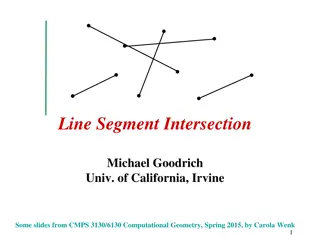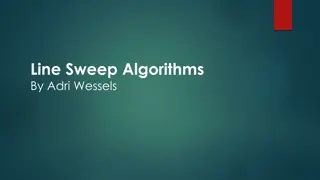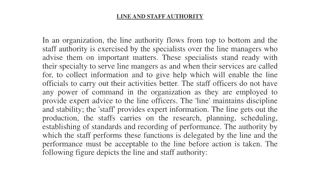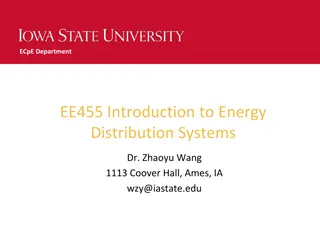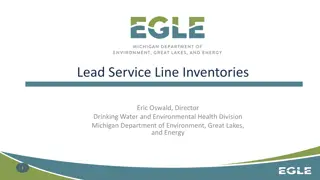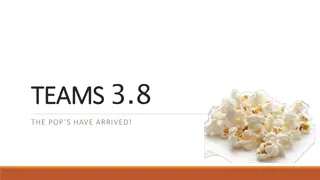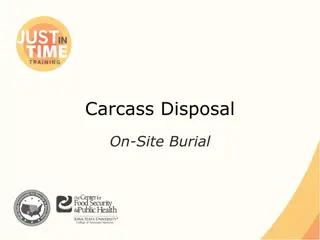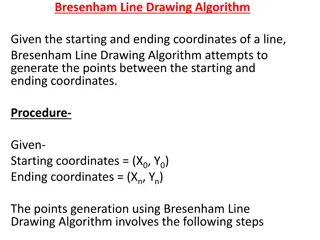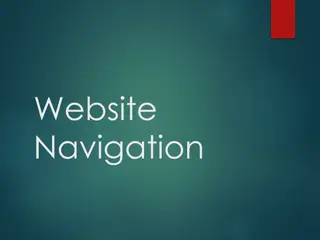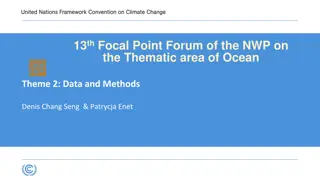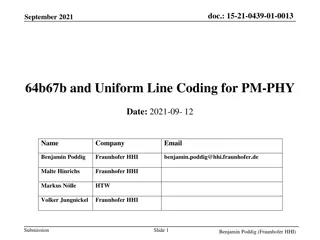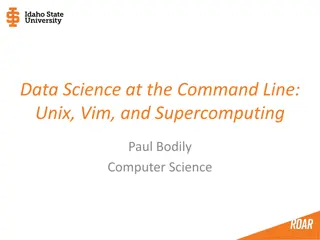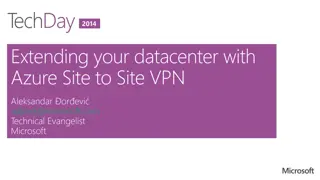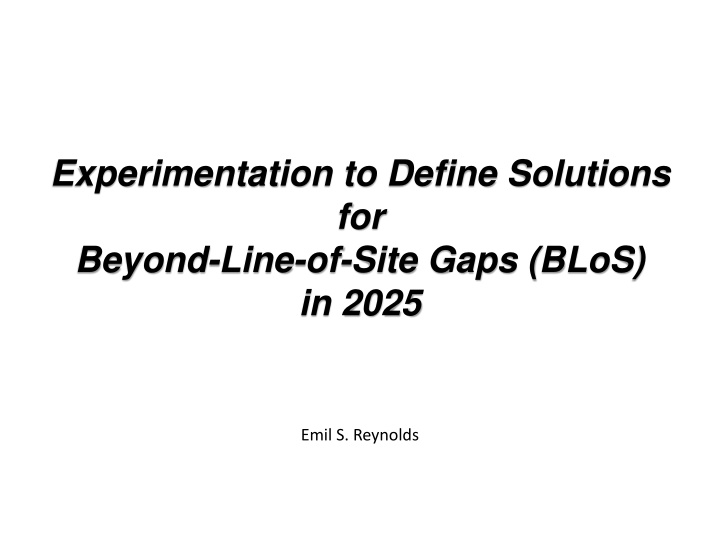
Solutions for Beyond-Line-of-Site Gaps in 2025
Experimentation to define solutions for addressing gaps in Beyond-Line-of-Site communication for the Fires community in 2025 and beyond. The project aims to enhance digital messaging capabilities, assess potential solutions, and incorporate them to improve communication efficiency.
Download Presentation

Please find below an Image/Link to download the presentation.
The content on the website is provided AS IS for your information and personal use only. It may not be sold, licensed, or shared on other websites without obtaining consent from the author. If you encounter any issues during the download, it is possible that the publisher has removed the file from their server.
You are allowed to download the files provided on this website for personal or commercial use, subject to the condition that they are used lawfully. All files are the property of their respective owners.
The content on the website is provided AS IS for your information and personal use only. It may not be sold, licensed, or shared on other websites without obtaining consent from the author.
E N D
Presentation Transcript
Experimentation to Define Solutions for Beyond-Line-of-Site Gaps (BLoS) in 2025 Emil S. Reynolds
Problem Statement The Fires community of today through 2025 and beyond lacks the capability to send a digital Call For Fire via the projected Precision Fires Warrior capability. 2
Joint Fires 2020 and beyond Significant gaps in Beyond Line Of Site Communication FA community will not be fielded with WIN-T comms on the move capability and will be limited to only use of Maneuver assets.* Gaps from FO to FSO, FSO to BN, BN to engagement assets. Currently, issues with 40% dropped CFF and duplicate messages.** 3
Potential Solutions Soldier Radio Waveform (SRW) One of three Mobile Ad Hoc Networking Waveforms included in the Joint Tactical Radio System (JTRS) prior to 2011. This has been identified as a potential solution. Joint Operational Long Term Evolution Deployable-Tactical Cellular System (JOLTED TACTICS) JOLTED TACTICS provides communications and data link capability down to the dismounted team member level, including those operating in remote locations. Employing a 4th Generation (4G), Long Term Evolution (LTE), software enhanced Smart Phone , Warfighters can access or share voice, video, and other forms of information and operational data while on the move. Aerial Web and integration Service (OMNInet) OMNInet can integrate IP and non-IP data. It can handle to handle over 3.1 million transactions a second, is network intelligent to manage bandwidth over disadvantaged networks and has a Business Process Workflow engine and simple drag and drop operator configurable controls. An OMNInetintegration requires no changes to current DoD systems and allows for rapid Proof of Concept (POC) integrations. Delay Tolerant Network (DTN) mobile ad-hoc networks (MANETs) in which communication between two nodes is possible at any time via a path of intermediate nodes although this path may vary with time. DTNs are potentially deployed in challenged environments using isolated mobile devices with limited resources. They are emerging as a promising technology in applications such as in wildlife management, military surveillance, underwater networks, and vehicular networks. Whetstone (Lockheed) This system compromised of a tactical server and communications node delivers mission command information from the strategic level to the dismounted soldier. Our solution does this without the need for dedicated ground terminal equipment, or reliance on a vehicle-mounted connection. 4
BLoS Gap Experimentation Purpose Statement: The purpose of this experiment is to develop, assess, refine and validate the future digital messaging solutions for the Fires community in the Deep Fight in 2025 and beyond. Outcomes: I. Updated gap solutions for insertion into the FY14 SIMEX II. Identified other Fires gaps/shortfalls III. Understand potential fills to projected gaps across WfFs. Endstate: Incorporate proposed solutions into the FY14 Unified Challenge 14.4 SIMEX to further examine Beyond Line of Sight gaps with future CFF systems. 5
BLoS Learning Demands How do Fires forces in the deep fight (70km+) and/or BLoS situations achieve persistent communications to send/receive digital CFF/data without latency and priority of service issues? How do Fires forces behind the Corps front achieve persistent communications to send and receive digital CFF/data without latency and priority of service issues? How does an integrated air-ground picture message set and priority requirements for the WIN-T environment facilitate fires and integrated air-ground operations. How do Fires forces in the deep fight/BLoS achieve persistent communications with minimal latency and priority of service issues without high cost, limited gap solutions? How does the future Army NetOPS architecture affect timely, responsive fires (surface-to-air and surface-to-ground) while providing near real time single air-ground picture? Reference: Compiled by Emil Reynolds with support from TAC Fires Cell at Fort Sill. 6
BLoS Virtual Concept Exploration (VCE) BLoS Concept of Operation (A New Approach) VCE takes an operational concept or technical solution that has been modeled with correct specifications through attribute-based experiment to verify that its specifications can be met in a generic M&S world, achieving system performance data (distance, time, speed) VCE does not require a specific ORBAT or Scenario VCE examines concept/solution in different environments (jungle, desert, mega-city, mountainous, etc) VCE Spirals are run for each of the different environments to determine that the proposed concept/solution can perform to specified criteria VCE solutions that pass the attribute-based experiment are examined further in a SIMEX to determine that a generic proven concept/solution can meet demands of an operational environment with ORBAT and specific scenario. 7
BLoS Implications Across the Army (1of 2) Beyond Line of Site issues will be prevalent in the Future Army as new systems are emplaced both within the C4ISR realm and as new network assets are fielded. New systems will require integration, interoperability, and message prioritization capabilities. The stresses of future combat on these systems and assets will cause new gaps to emerge requiring necessary fills to ensure network stability, unimpeded transmissions, and digital data passing. Issues include lack of network coverage, expense, message integration, and message prioritizing. Potential solutions can impact the force Army-wide to fill gaps in networked communications. Solutions also potentially impact Joint communication gaps within the force. 8
BLoS Implications Across the Army (2 of 2) The Sustainment Center has identified specific problem sets with future network capability BLoS. Potential solutions from the identified Fires gaps can help the Sustainment community with adjustments. Long-Range operations on the battlefield will be affected by BLoS gaps. This includes Combat Arms where retrans may not be available, communications on the move assets may not be available, Asymmetric Warfare to include underground operations will have connectivity issues, and more. 9
Participants and Guests Actual Participants Potential Participants JAED Asymmetric Warfare Group Fires Center of Excellence Dominant Maneuver Division (G8) Fires Battle Lab Cyber Center of Excellence (Network Battle Lab) Potential VIPs: BG McPadden Congressman J. Randy Forbes -- Founder and Co-chair of Congressional M&S Caucus C4 Assessments Division (JS J6) USAF Effort Endorsed by: COL Michael S. Patton -- TCM Fires Cells USMC Industry Partners 10
Proposed Agenda Day 0: Arrival Day 1: In-Brief; Set up (Morning); Pilot Tests (Afternoon) Day 2: Stress projected infrastructure via simulation. May change based on NBL preparatory documents Inject and Test proposed Solutions Day 3: Inject and test proposed solutions Day 4: Inject and test proposed solutions Day 5: Inject and test Proposed Solutions Senior Leader Brief Breakdown Site Depart either Day 5 or Day 6. 11
Glide Path Design Lead: Design Back-Up: 21 Feb 2014: Planning Conference and Update on work completed; Tech Working Group; Scenario Working Group; Equipment transport discussion (Distributed) 21 Mar 2014: Planning Conference and Update; Tech Working Group (Distributed) 14 Apr 2014: Tech Working Group (Distributed) 19-21 May 2014: Pilot tests (Lighthouse, distributed, JSAF) 23-27 Jun 2014: MAINEX (Lighthouse) 07 Jul 14: ExSum 14 Jul 14: Emerging Insights (Event Results Report) 30 Aug 14: Final Report Estimated Cost to conduct at Lockheed Martin Lighthouse, Suffolk, VA: $140,000 TDY from: Ft. Sill x 5 PAX Ft. Gordon x 3 PAX USAF x 3 PAX Total Participants: 45 12
Fire Mission Gap Identification BDE FSE NCW Waveform NCW Waveform Bn FSE BN FDC NCW Waveform NCW Waveform Co CP PLT FDC The Gap is from the Co FSO to the BN FSE because without a Terrestrial or Celestial Beyond Line of Sight (BLoS) means of communication the message cannot be sent from or to the tactical edge. SRW Waveform SINCGARS Waveform Co CDR Co FSO SINCGARS Waveform Guns FOs 14
Proposed Experiment Architecture (On Site at the Lockheed Center for Innovation) FDC AFATDS JADOCS Engagement Asset FSO AFATDS C2PC (USMC) JOLTED TACTICS OMNI (USAF) DTN* SRW* PFW (PFED INC 2) *SRW and DTN are FCoE TACFires identified solutions 15

